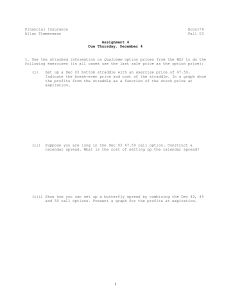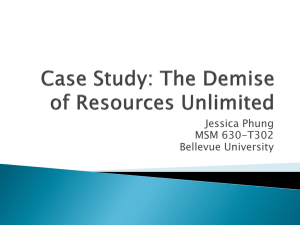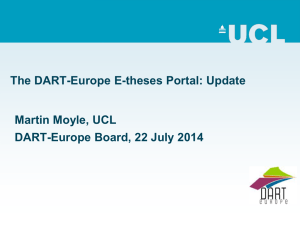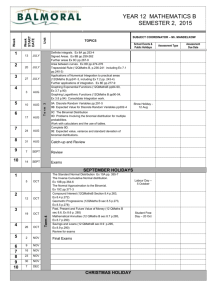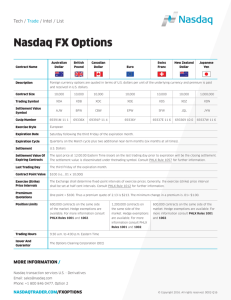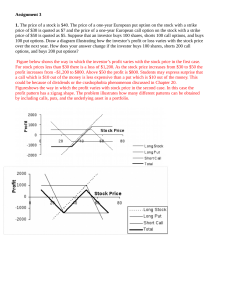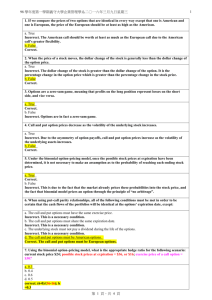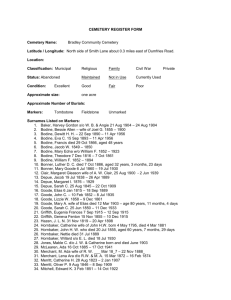Project 1
advertisement
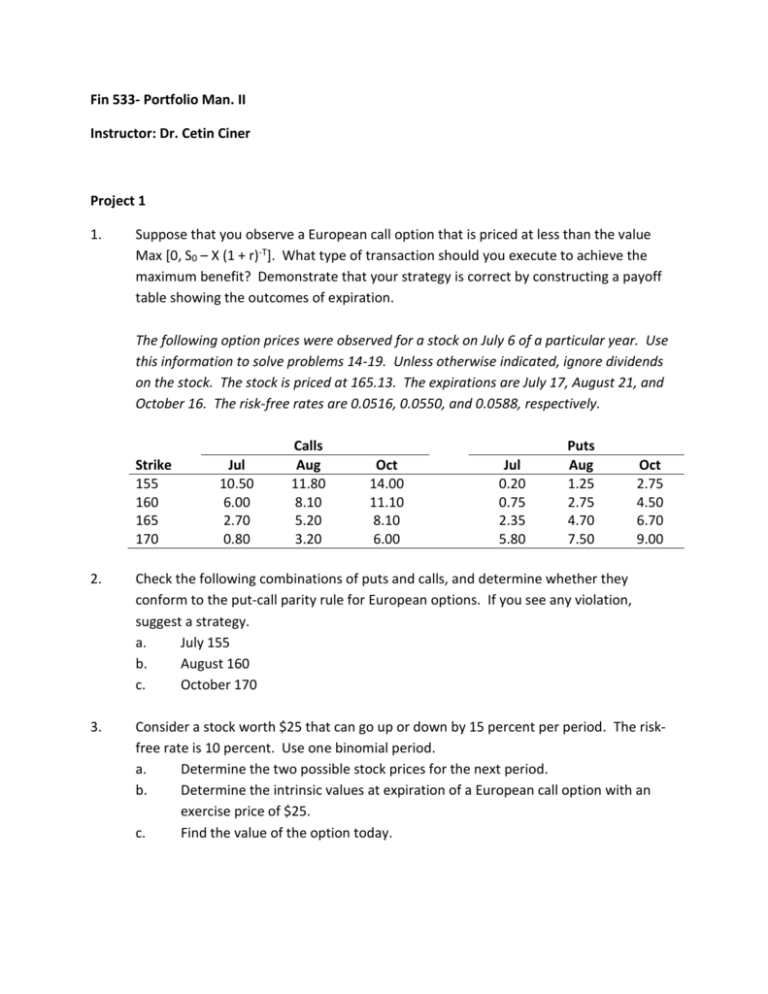
Fin 533- Portfolio Man. II Instructor: Dr. Cetin Ciner Project 1 1. Suppose that you observe a European call option that is priced at less than the value Max [0, S0 – X (1 + r)-T]. What type of transaction should you execute to achieve the maximum benefit? Demonstrate that your strategy is correct by constructing a payoff table showing the outcomes of expiration. The following option prices were observed for a stock on July 6 of a particular year. Use this information to solve problems 14-19. Unless otherwise indicated, ignore dividends on the stock. The stock is priced at 165.13. The expirations are July 17, August 21, and October 16. The risk-free rates are 0.0516, 0.0550, and 0.0588, respectively. Strike 155 160 165 170 Jul 10.50 6.00 2.70 0.80 Calls Aug 11.80 8.10 5.20 3.20 Oct 14.00 11.10 8.10 6.00 Jul 0.20 0.75 2.35 5.80 Puts Aug 1.25 2.75 4.70 7.50 Oct 2.75 4.50 6.70 9.00 2. Check the following combinations of puts and calls, and determine whether they conform to the put-call parity rule for European options. If you see any violation, suggest a strategy. a. July 155 b. August 160 c. October 170 3. Consider a stock worth $25 that can go up or down by 15 percent per period. The riskfree rate is 10 percent. Use one binomial period. a. Determine the two possible stock prices for the next period. b. Determine the intrinsic values at expiration of a European call option with an exercise price of $25. c. Find the value of the option today. d. e. Construct a hedge by combining a position in stock with a position in the call. Show that the return on the hedge is the risk-free rate regardless of the outcome, assuming that the call sells for the value you obtained in part c. Determine the rate of return from a riskless hedge if the call is selling for $3.50 when the hedge is initiated. 4. Consider a two-period, two-state world. Let the current stock price be 45 and the riskfree rate be 5 percent. Each period the stock price can go either up by 10 percent or down by 10 percent. A call option expiring at the end of the second period has an exercise price of 40. a. Find the stock price sequence. b. Determine the possible prices of the call at expiration. c. Find the possible prices of the call at the end of the first period. d. What is the current price of the call? e. What is the initial hedge ratio? 5. Suppose that you are following the stock of a firm that has been experiencing severe problems. Failure is imminent unless the firm is granted government-guaranteed loans. If the firm fails, its stock will, of course, fall substantially. If the loans are granted, it is expected that the stock will rise substantially. Identify two strategies that would be appropriate for this situation. Justify your answers. Strike 160 165 170 Jul 6.00 2.70 0.80 Calls Aug 8.10 5.25 3.25 Oct 11.10 8.10 6.00 Jul 0.75 2.40 5.75 Puts Aug 2.75 4.75 7.50 Oct 4.50 6.75 9.00 6. Construct a bear money spread using the October 165 and 170 calls. Hold the position until the options expire. Determine the profits and graph the results. Identify the breakeven stock price at expiration and the maximum and minimum profits. Discuss any special considerations associated with this strategy. 7. Suppose that you are expecting the stock price to move substantially over the next three months. You are considering a butterfly spread. Construct an appropriate butterfly spread using the October 160, 165, and 170 calls. Hold the position until expiration. Determine the profits and graph the results. Identify the two breakeven stock prices and the maximum and minimum profits.
